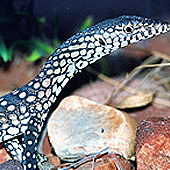One way in preserving wildlife is with zoos and aquariums. However, opinions vary on the wildlife in captivity. There are some who believe that keeping animals in captivity encourages conservation and education, and those who feel zoos support animal cruelty. But one thing is for certain; a well-planned and constructed environment and habitat simulation greatly supports our wildlife and ecosystem.
Wildlife and Their Influence to Ecological Balance
Most ecologists agree that all animals and plant life play an important role in balancing the ecosystem no matter how large or small. This is why it is vital that we preserve what little wildlife remains. And by having wildlife in captivity, we help conserve and preserve the earth’s limited resources. Moreover, the preservation and safeguarding of our wildlife helps restore the world’s ecological balance. In truth, every little bit helps restore our habitat. And with dedicated organizations such as Black Snake Productions, there is great support for wildlife preservation and the opportunity of interactive educational growth for many.
Environment and Habitat Simulation
It used to be that all wildlife in captivity was considered very cruel. However, much of the natural environment for many animals has been destroyed. And without such facilities, many creatures would become extinct.
Environment and habitat simulation supports the well-being of all creatures. It is comprised of behavioral enrichment that enhances the quality of captive animal care. The structure includes a variety of environmental stimuli so that each animal receives optimal physiological and psychological well-being. As well, the curriculum includes a habitat for the captive animal that resembles their natural wild environment and much as possible.
What is more, for every creature in captivity there is an outlined plan that defines what will meet the needs of the specific animal. The plan includes the individual history of the animal, present habitat, desired behavior and the needs of the species. Once a plan is developed it is put into action and always modified as the needs of the animal changes.
Basically, the enrichment techniques are designed to stimulate the animal’s senses. The senses are activated as if they were in the wild; sensory enrichment includes habitat factors, olfactory, auditory, research projects, objects, food and training. As well, there are guidelines for enrichment plans so that the animal is provided and guaranteed a suitable living environment.

